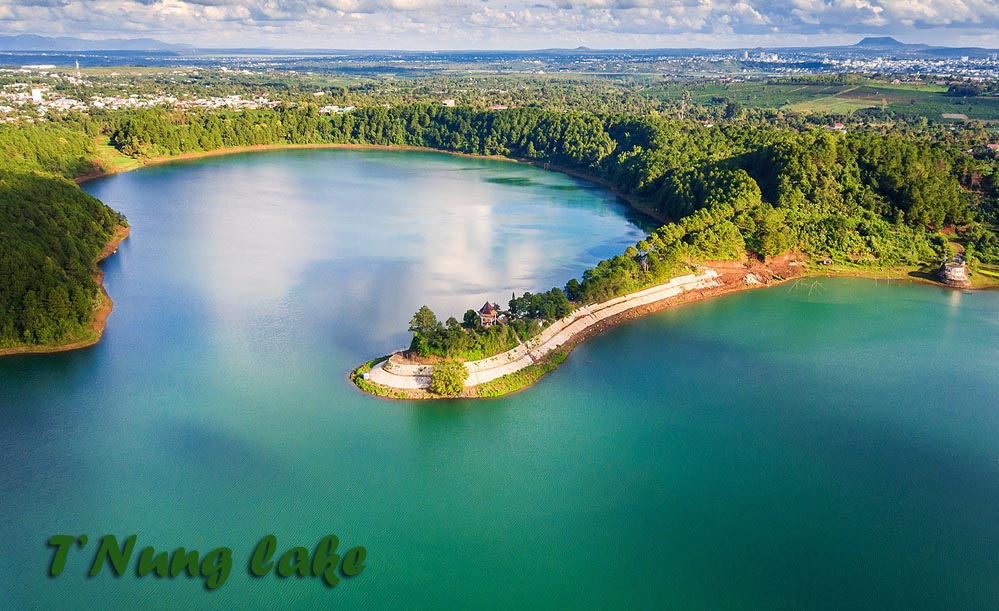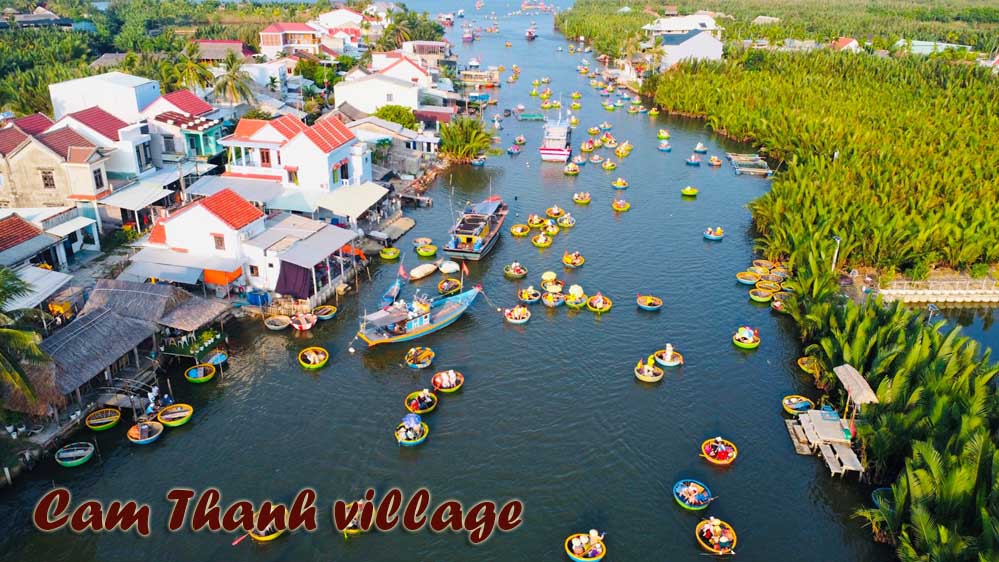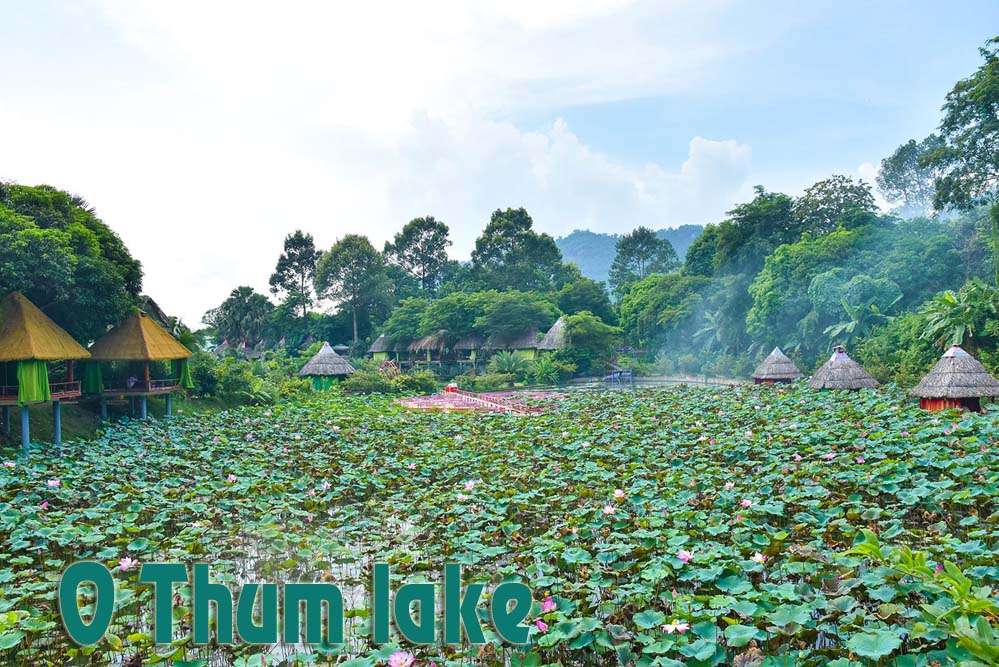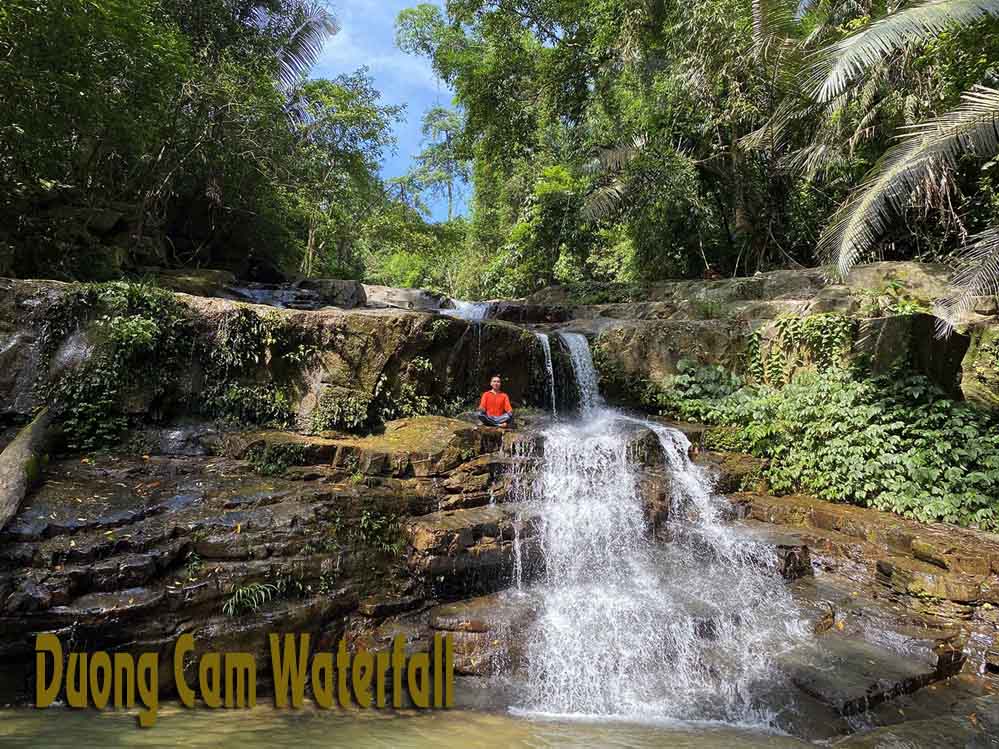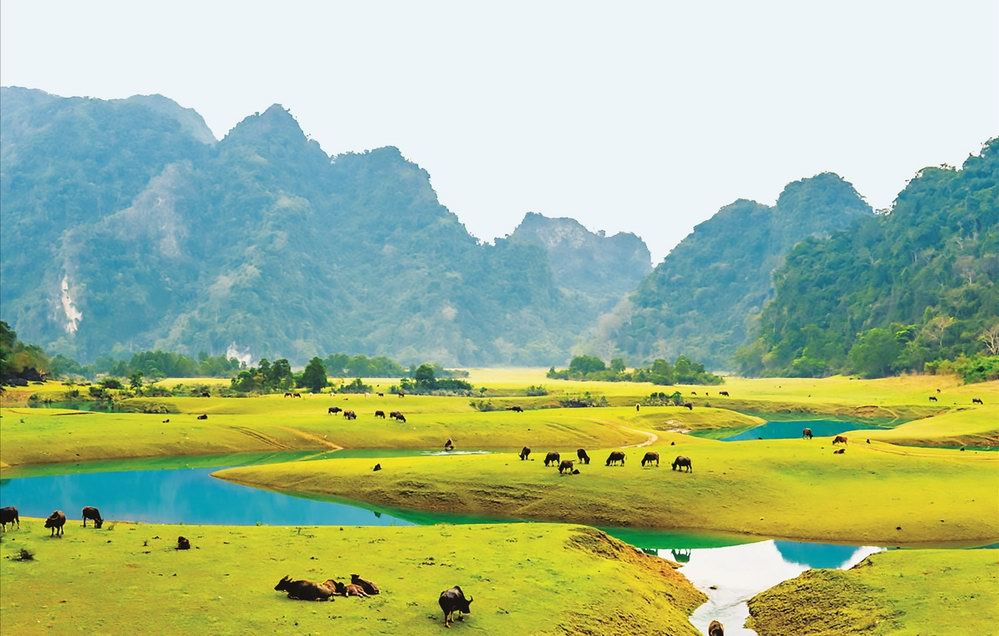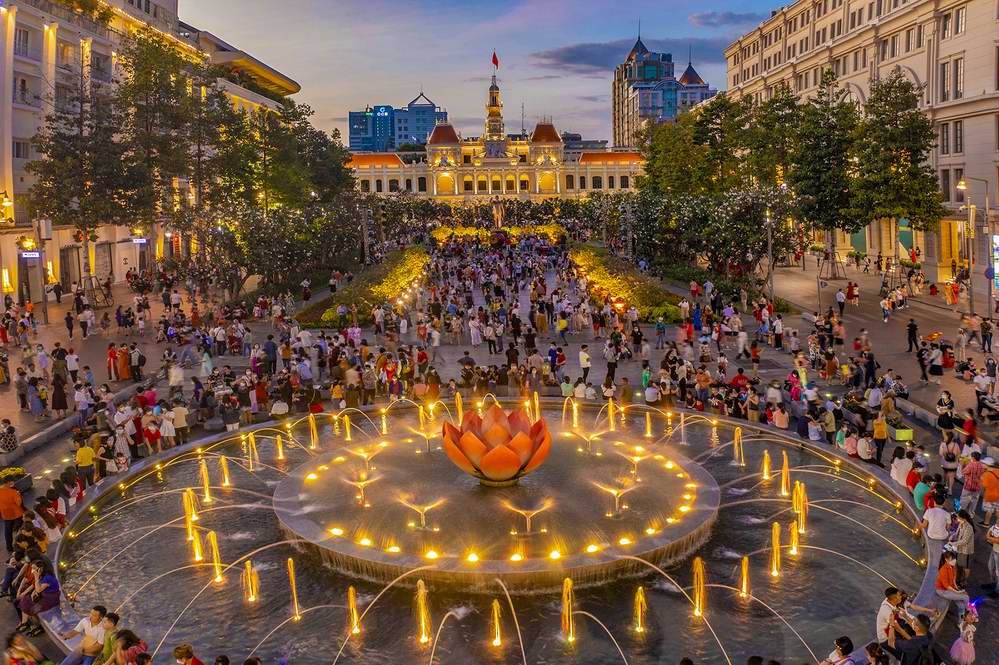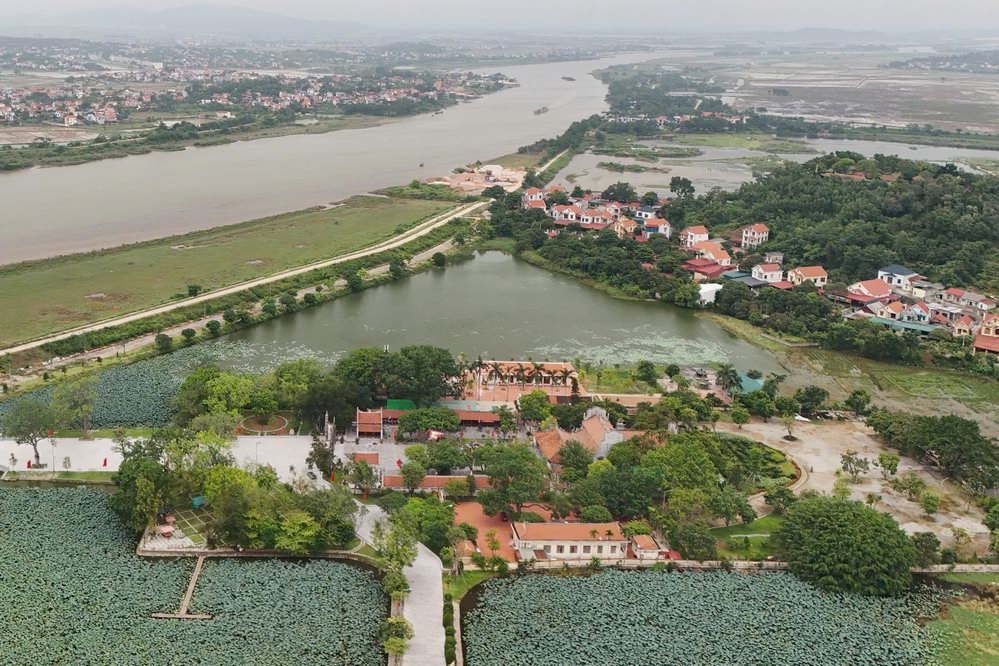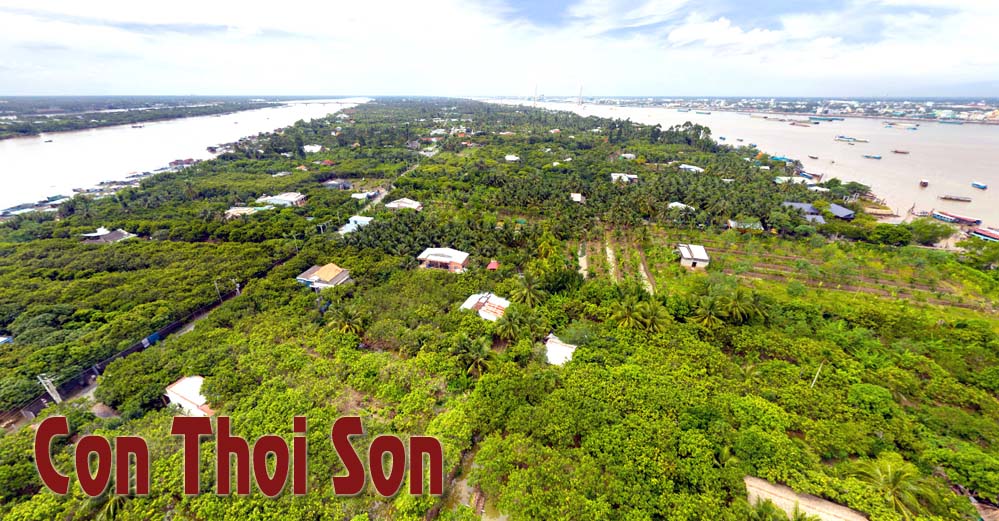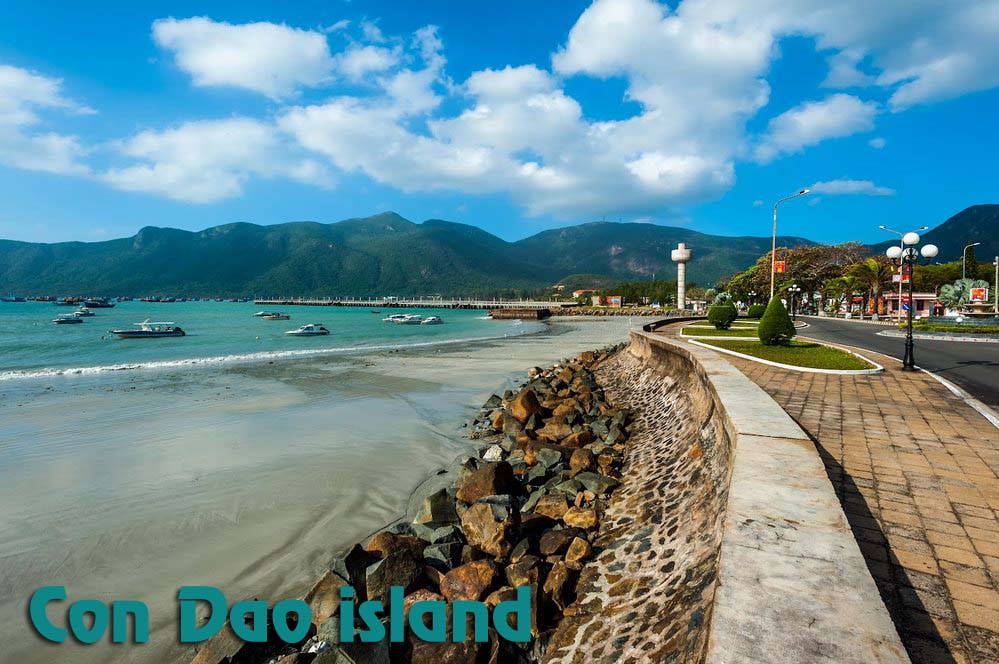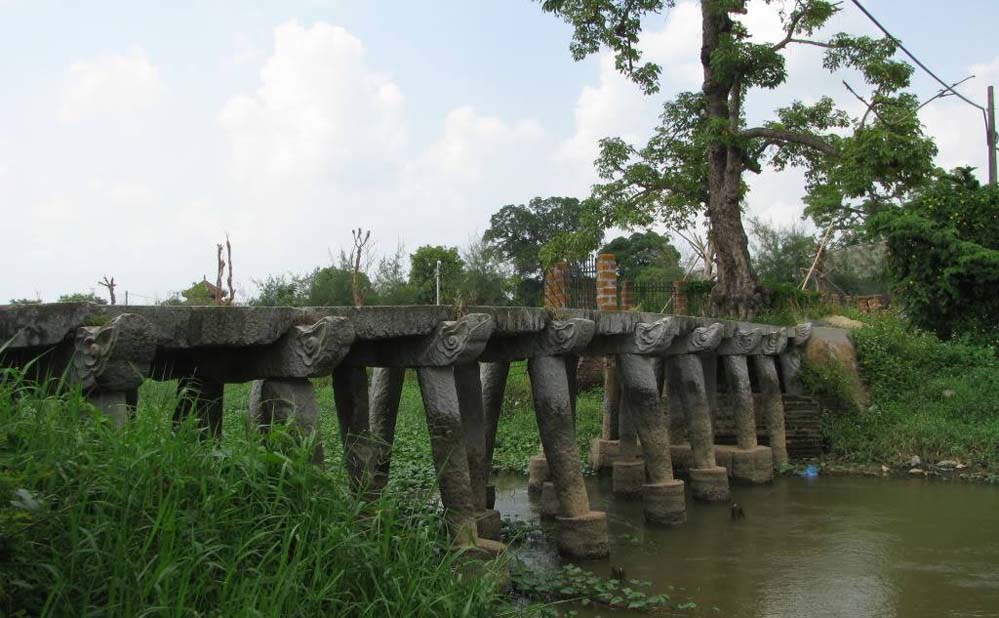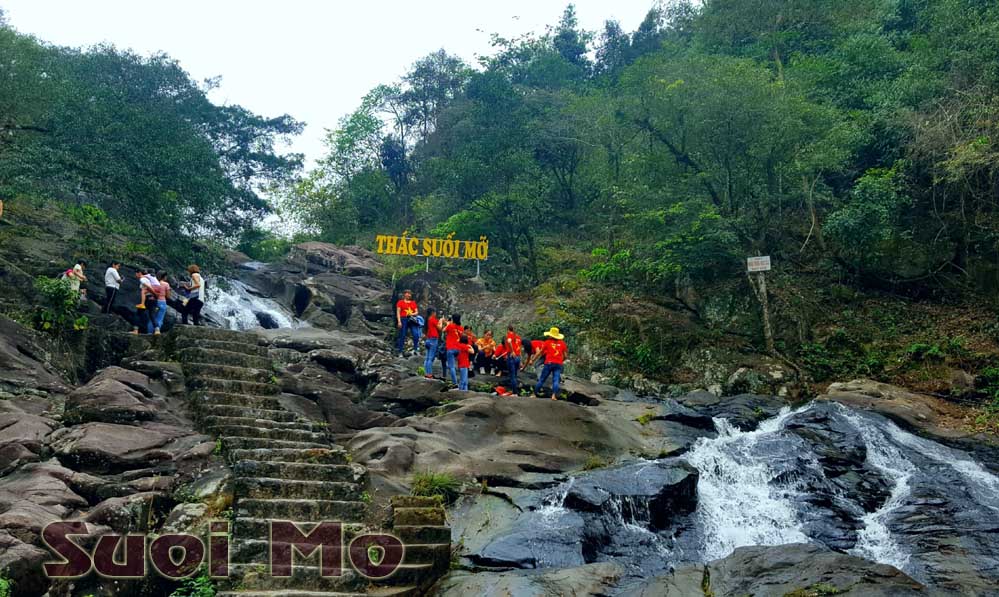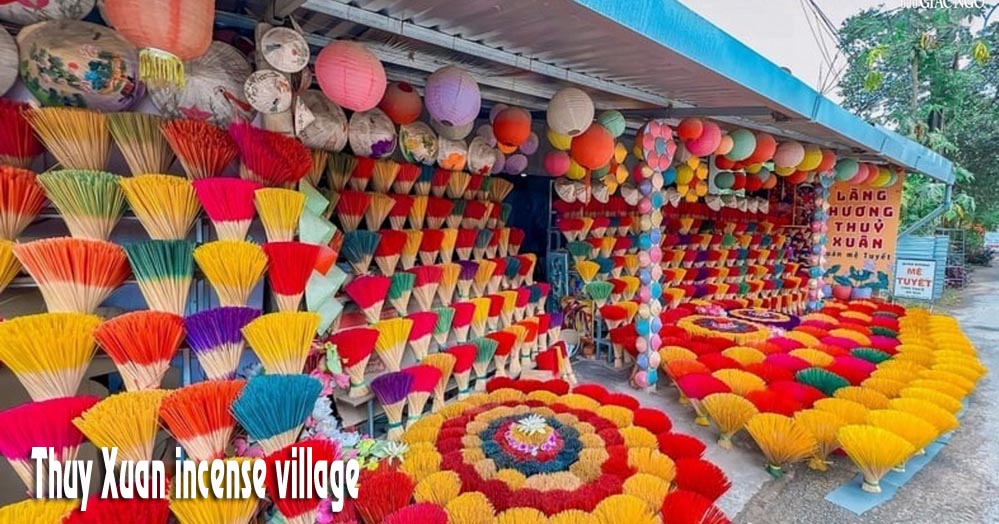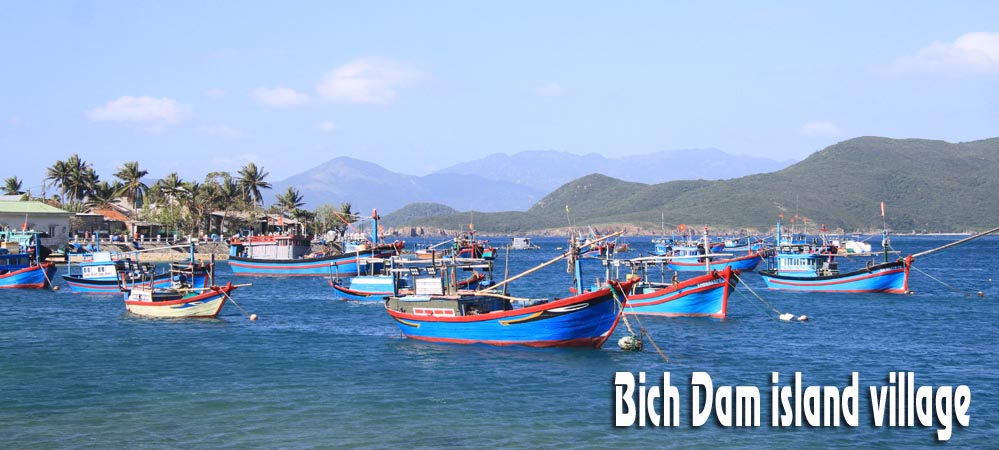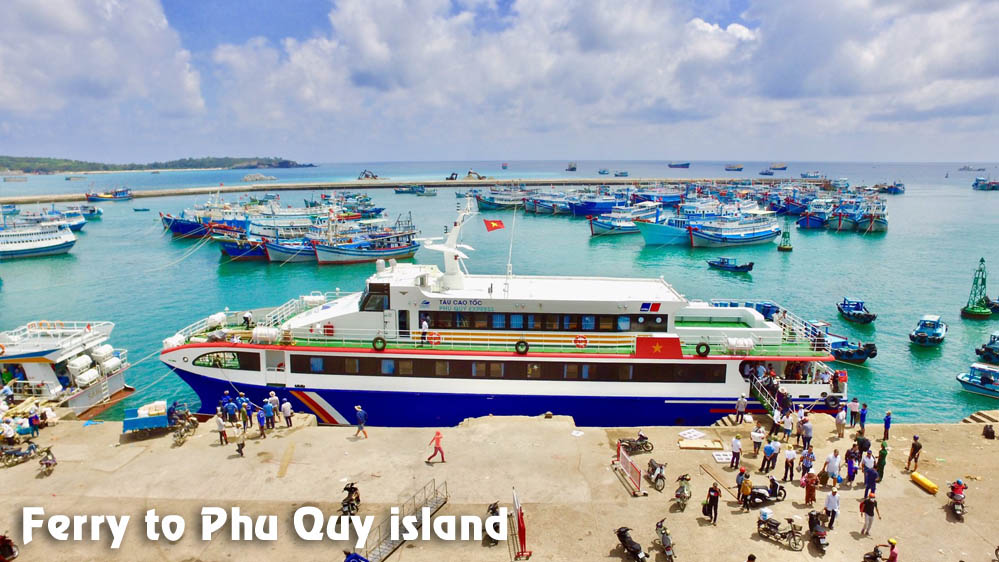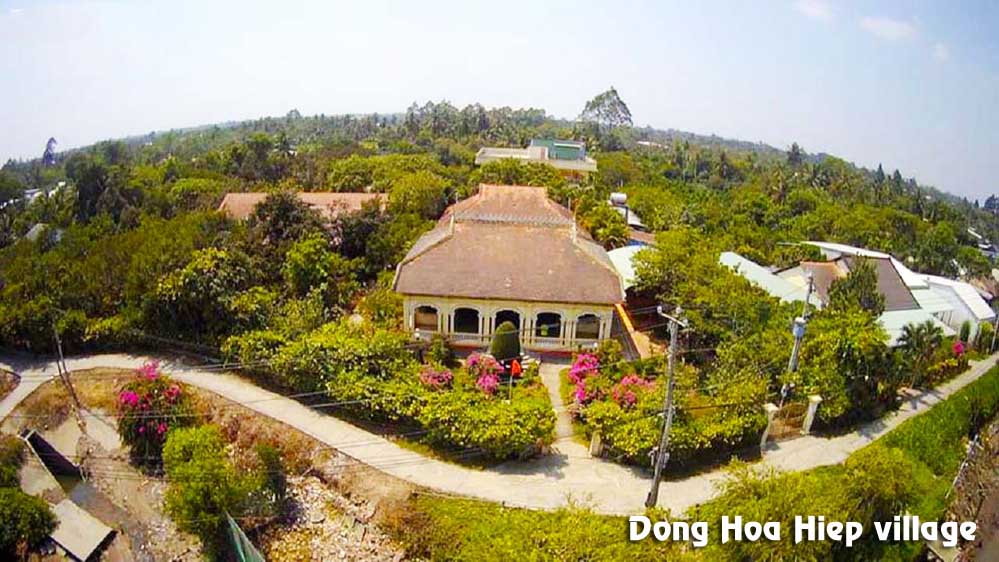You are planning to explore Phu Quy Island - the wild but enchanting island of Binh Thuan, then knowing the experience of taking the Phu Quy high-speed boat is really necessary. This is the only means of transport that takes you from the mainland to the island, with many different shipping companies and schedules. From how to book tickets, choose a boat to tips to limit seasickness, all will be revealed in this article! Asiatica Travel
How long does it take to go by boat to Phu Quy Island?
Currently, the only means for tourists to set foot on Phu Quy Island is by boat from Phan Thiet city . With a distance of more than 110km, the time to go to Phu Quy ranges from 2.5 hours to 3.5 hours depending on the type of boat. Normally, around 6:30 to 7:30 every day, the boat will depart from Phan Thiet port to the island. However, depending on the day, there will be an earlier trip at 5:30 or the latest trip at 15:00.
Where is Phu Quy express ferry terminal?
The Phan Thiet - Phu Quy express ferry terminal is located at the end of Pham Van Dong Street, Ward 5, Hung Long Ward, Phan Thiet City, Binh Thuan Province. This place is also known as Phan Thiet Port or Phan Thiet Transport Port. Thanks to its location near the city center, visitors can easily travel to the ferry terminal to Phu Quy.
At Phan Thiet port, you can easily buy ferry tickets to Phu Quy online from high-speed ferry companies such as: Chan Kha high-speed ferry, Superdong ferry, Trung Trac Phu Quy ferry, Phu Quy Express ferry... In particular, there is also a spacious parking lot and overnight parking service so that visitors can rest assured to leave their vehicles and travel to Phu Quy island.
Transfers from Ho Chi Minh City to Phan Thiet
After the Dau Giay - Phan Thiet expressway came into operation, the travel time from Ho Chi Minh City to Phan Thiet (Binh Thuan province) was shortened to only about 2 hours, not only shortening the distance, making the car run smoothly but also avoiding the National Highway 1 parallel to this project which is "straining" itself with overload, especially the section from Xuan Loc district, Dong Nai to Ham Thuan Nam district, Binh Thuan. In addition to this highway, there is also the Saigon - Phan Thiet railway if visitors want to experience train service.
Saigon - Phan Thiet train
There are no overnight trains from Saigon to Phan Thiet, so you need to arrange a suitable departure time to avoid missing your journey. The earliest train from Ho Chi Minh City to Phan Thiet is SPT2, departing at 6:10 am and arriving at Phan Thiet station at 10:10 am. The train ride takes about 4 hours, and the train ticket price is 180,000 VND/person.
The simplest and most time-saving way to book tickets is to call to book tickets or buy train tickets online through the official website of Vietnam Railways Corporation https://dsvn.vn. Or go to Saigon train station, address: 01 Nguyen Thong, Ward 9, District 3, Ho Chi Minh City to buy tickets directly.
The distance from Phan Thiet station to Phan Thiet passenger wharf is about 4.5km, taking a taxi for about 15 minutes with a fare of about 65,000 VND/trip.
Saigon - Phan Thiet bus
Currently, there are many Limousine companies operating on the route from Ho Chi Minh City to Phan Thiet and vice versa, specifically: ADT Limousine, G5Car, Ben Tre Limousine, Hoang Vu Limousine, Thien Kim, Hai Tuan Limousine, ... with prices around 350,000 VND/ticket. Travel time from Ho Chi Minh City to Phan Thiet by bus is about 3.5 hours.
Previously, if passengers wanted to take a speedboat to Phu Quy, they often chose to take the 12:00 night bus of Phuong Trang, Hanh Cafe, Thuy Ha Linh... with a price of about 150,000 VND - 180,000 VND to Phan Thiet port around 4:00 am, then rest right at the cafes in front of Phan Thiet Passenger Wharf. The current bus companies are all equipped with beds, air conditioning and full amenities for the night journey, so passengers are completely comfortable and alert for the train early the next morning.
Useful tips on how to book ferry to Phu Quy island
Choosing the right high-speed ferry company is very important, because it directly affects your experience and health during the trip. Normally, tourists will rely on the following criteria to choose:
- Ship type, age and design.
- Is the ship stable? Does it cause seasickness?
- Is the seating spacious, comfortable and pleasant?
- Fares and services included on board.
- Service from booking to boarding by staff.
- Reviews and experiences from previous customers.
Currently, to book Phu Quy ferry, you will have 3 options: Superdong, Phu Quy Express and Hung Phat ferry.
Superdong Ship
+ Adult fare: 370,000 VND / person
+ Children's fare (from 6 to 11 years old): 270,000 VND / person
+ Fare for elderly people (over 60 years old): 305,000 VND / person
According to reviews, the ship is clean and you will be served free water. The distance between the rows of seats is wide enough for you to stretch your legs and sit comfortably.
The journey from Phan Thiet to Phu Quy takes about 2 hours and 30 minutes, but during rough seas it can take longer and there is a higher risk of seasickness. Alternatively, you can pay an additional 50,000 VND to upgrade to VIP class with comfortable sleeper berths.
Ticket booking website: superdong.com.vn
Phu Quy Express
+ Adult fare: 390,000 VND / person
+ Children fare: (from 6 to 11 years old): 310,000 VND / person
+ Fare for elderly people: (over 60 years old): 310,000 VND / person
+ VIP ticket: 580,000 VND per person
Most people will book tickets for the Phu Quy Express, because the ship is considered the leading and most modern high-speed train on the Phan Thiet - Phu Quy route. All cabins on the ship are equipped with luxurious amenities, including beds, comfortable seats, air conditioning, free coffee service, wifi connection, television, along with clean toilets... In particular, the ship also has VIP cabins to meet the needs of customers.
Travel time from Phan Thiet to Phu Quy Island will be about 2 hours 45 minutes, depending on the weather.
Ticket booking website: taucaotocphuquy.com
Hung Phat Ship
+ Seat ticket: 250,000 VND / person
+ Sleeper ticket: 250,000 VND / person
With the capacity to accommodate up to 250 passengers and 50 tons of cargo, this is one of the largest ships on the route. Travel time from Phan Thiet to Phu Quy Island usually lasts from 3 to 3.5 hours.
To ensure the comfort of customers, all rooms and decks on the Hung Phat 26 are equipped with air conditioning systems. This helps tourists relax and rest comfortably during the trip before arriving at Phu Quy Island.
Ticket booking website: hungphatphuquy.vn
Benefits of booking ferry to Phu Quy island in advance
According to my experience, booking ticket before going to Phu Quy island will give you the following benefits:
+ Guaranteed seat on the boat: Booking Phu Quy ferry tickets in advance helps you ensure a seat on the boat to the island, avoiding the situation of no seats or having to wait for a long time.
+ Save time: With pre-booked tickets, you don't need to queue up at the pier to buy tickets. Instead, you just need to arrive on time to board the train and save waiting time.
+ Fare deals: There may be special offers when you book your ferry tickets in advance, including attractive fares or bundled service packages.
+ Easy seat selection: When booking tickets in advance, you can choose your preferred seat on the ferry, including air-conditioned indoor seats or outdoor seats to enjoy the sea view.
What is the best season to travel to Phu Quy?
To avoid seasickness, you should choose the time to go to Phu Quy Island between December and June when the weather is calm and the sea is calm. During this time, the climate is often very suitable for sightseeing and swimming. You will have the opportunity to enjoy the natural blue sky and watch the gentle waves rolling onto the rocky shore. Enjoy the beautiful scenery and experience the clear and fresh sea space.
Some notes when booking Phu Quy ferry
For the smoothest trip, remember the following when booking your ferry:
+ When purchasing a ticket, inform the staff that you are prone to seasickness and request to be seated in the middle or lower decks of the ship. This will minimize the impact of the waves on your body, helping you avoid feeling dizzy and uncomfortable due to seasickness.
+ To book a high-speed ferry, you need to provide one of the following identification documents: Passport, Identity Card, Citizen Identification Card, Driver's License, Student Card,...
+ Children under 6 years old do not need to buy a ticket and do not need to provide personal information. However, when traveling by ferry, parents need to bring their child's birth certificate (a photocopy is acceptable), student ID card or health insurance card to confirm age and family relationship.
Currently, Phu Quy shipping companies including Phu Quy Express, Superdong and Hung Phat all operate on the Phan Thiet - Phu Quy route and vice versa. Every day, there are a total of 3 ships from Phan Thiet to Phu Quy, with departure times from 6:30 to 7:00. Similarly, on the Phu Quy - Phan Thiet route, there are also 3 ships a day, with departure times from 8:00 to 10:00.
Hopefully the above information will help you book Phu Quy ferry easily.
Source: https://asiaticatravel.com/travellers-eyes/how-to-get-to-phu-quy-island-from-ho-chi-minh-city.asp
